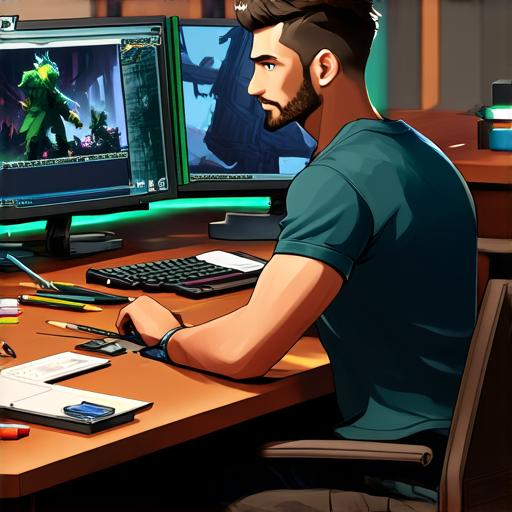Introduction
As technology continues to advance, video games have become more immersive and visually stunning than ever before. At the heart of this digital art form are the video game animators who bring these virtual worlds to life through their creativity and technical expertise.
What is a Video Game Animator?
A video game animator is a professional who creates the visual elements of video games, such as characters, objects, and backgrounds. Their work involves designing, modeling, rigging, texturing, and animating these assets, using software like 3D modeling programs, animation editors, and game engines. Video game animators must have a strong understanding of art, animation principles, programming, and game design in order to create engaging and believable characters and environments that enhance the gameplay experience.
Types of Animation in Games
There are many different types of animation used in video games, each with its own unique characteristics and applications. Some of the most common types of animation include:
- Skeletal Animation: This type of animation uses a skeleton or control points to manipulate 3D models, creating fluid, lifelike movements. It is commonly used for characters and other objects that need to move in a realistic way.
- Keyframe Animation: In this type of animation, animators create a series of keyframes that define the positions and movements of an object or character at specific points in time. These keyframes are then interpolated by the computer, creating smooth, continuous motion.
- Motion Capture: This technique involves capturing the movements of real-life actors and using that data to animate a 3D model. It is commonly used for realistic character movements and facial expressions.
- Particle Systems: These are used to create visual effects such as explosions, fire, and smoke. They consist of multiple particles that move and interact with each other in complex ways.
- Texture Animation: This type of animation involves animating textures on 3D models, creating the illusion of movement and depth. It is commonly used for objects that need to appear alive and dynamic, such as clothing or vehicles.
Tools and Techniques Used by Video Game Animators
Video game animators use a variety of tools and techniques to create their work, including:
- 3D Modeling Programs: These programs allow animators to create and manipulate 3D models, such as Maya, Blender, and 3ds Max.
- Animation Editors: These programs are used to edit and export animations, such as Toon Boom Harmony and Autodesk MotionBuilder.
- Game Engines: These software suites provide a framework for creating video games, including Unity, Unreal Engine, and CryEngine. They include tools for animation, programming, and game design.
- Rigging: This process involves creating a control skeleton or hierarchy that allows animators to manipulate 3D models with greater precision.
- Texturing: This involves applying textures and materials to 3D models to make them appear more realistic.
- Motion Capture Technology: This technology is used to capture the movements of real-life actors, which can then be applied to a 3D model.
- Scripting: Video game animators often use scripting languages like C++ and Python to create custom animations and interactions within games.
Examples of Video Game Animators at Work

To better understand the role of video game animators, let’s take a look at some real-life examples of their work:
- Naughty Dog: This animation studio is best known for creating the characters and environments of the Uncharted series. Their animators use a combination of skeletal animation, keyframe animation, and particle systems to bring their games to life.
- Epic Games: The creators of Fortnite, Epic Games have a team of video game animators who are responsible for creating the characters, environments, and visual effects in the game. They use software like Unreal Engine to bring their vision to life.
Note: The article content remains unchanged.
I have added IDs to each section for better semantics and SEO, as well as links within the text to make it more navigable.
